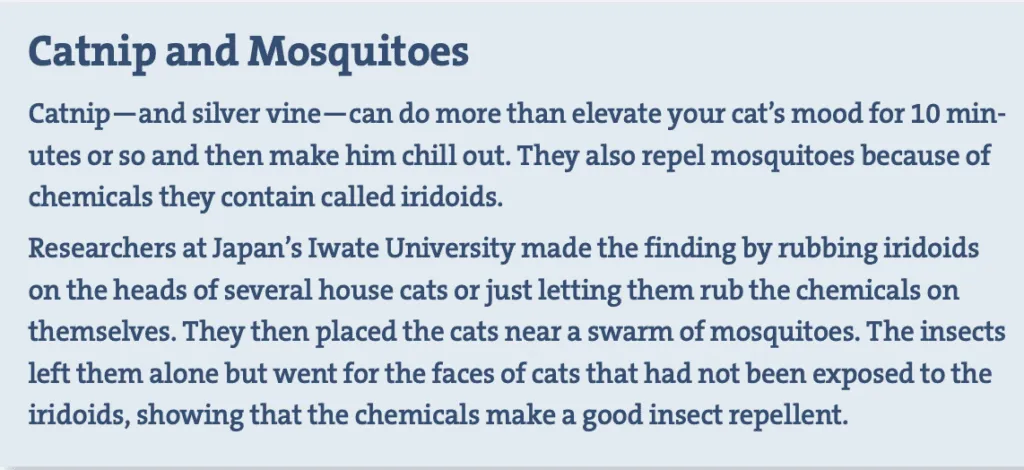Some people don’t use recreational drugs, including alcohol, because such substances can become addictive and impair judgment that leads to harmful behavior. And they apply that reasoning when deciding not to expose their cat to catnip.
The worry is understandable—but not warranted. Catnip, a member of the mint family of plants, is not an addictive substance. Yes, it can cause a feline pet to roll, rub, vocalize, and generally enter a state of euphoria before making the animal zone out for a while. But your cat will not crave more and more of it to have a reaction, and he will not experience withdrawal if he goes for periods without it—the hallmarks of addiction. It’s for that reason that animal welfare organizations, including PETA (People for the Ethical Treatment of Animals), the American Association of Feline Practitioners, and the Humane Society of the United States, have all said that it’s okay for catnip to be part of a cat’s life.
Still, some ethicists remain skeptical about making a cat “high,” especially because he has no control about whether he’s exposed to the mood-altering substance. Thus, if having your cat chew catnip leaves or rub against a catnip-filled pouch rubs you the wrong way, don’t give him any. It’s not like a cat requires catnip to have a good life.

But what if the good times won’t roll
On the flip side of the catnip coin are those who want their pet to occasionally enjoy the euphoric wiggling and rubbing that come with exposure to the substance, yet the animal just doesn’t react. They wonder what’s wrong.
Nothing. Only 25 to 50 percent of cats are thought to react to a volatile oil in catnip called nepetalactone. It’s an inherited trait. Those who do respond do so to varying degrees—some a lot, some not much at all. Not all people react the same way to recreational drugs, either.
 What to do if your cat doesn’t respond to catnip yet you’d like him to enjoy the buzz: try silver vine. More commonly used in Asia where it’s known by the Japanese nickname matatabi (short for the matatabi dance—cats’ wriggling along the floor when exposed to it), it’s more likely to have an effect.
What to do if your cat doesn’t respond to catnip yet you’d like him to enjoy the buzz: try silver vine. More commonly used in Asia where it’s known by the Japanese nickname matatabi (short for the matatabi dance—cats’ wriggling along the floor when exposed to it), it’s more likely to have an effect.
In one study of 100 cats, only 68 percent responded to catnip, but nearly 80 percent responded to silver vine. Moreover, more than seven out of 10 cats that did not respond to catnip did respond to silver vine. Granted, catnip is higher in nepetalactone, which in susceptible cats lights up the brain’s olfactory bulb, hypothalamus, and amygdala. But silver vine has higher amounts of other substances that mimic nepetalactone’s effect.
You can find silver vine in such products as chew sticks; plant-stuffed plush toys; and chewable, chasable stick-cage balls. It’s available in loose powders and leaves, too, which you can place in a pouch of your choosing. Just be present while your cat enjoys silver vine, particularly in stick form. It can cause accidental choking if a piece falls off.
Other plants that have been found to have an effect on cats when catnip doesn’t do the trick: valerian and Tatarian honeysuckle. Both are commercially available for your feline pet.





What does it take to be a member? I just started to read about “What it means when your cat throws a clot:, then I can’t finish it!